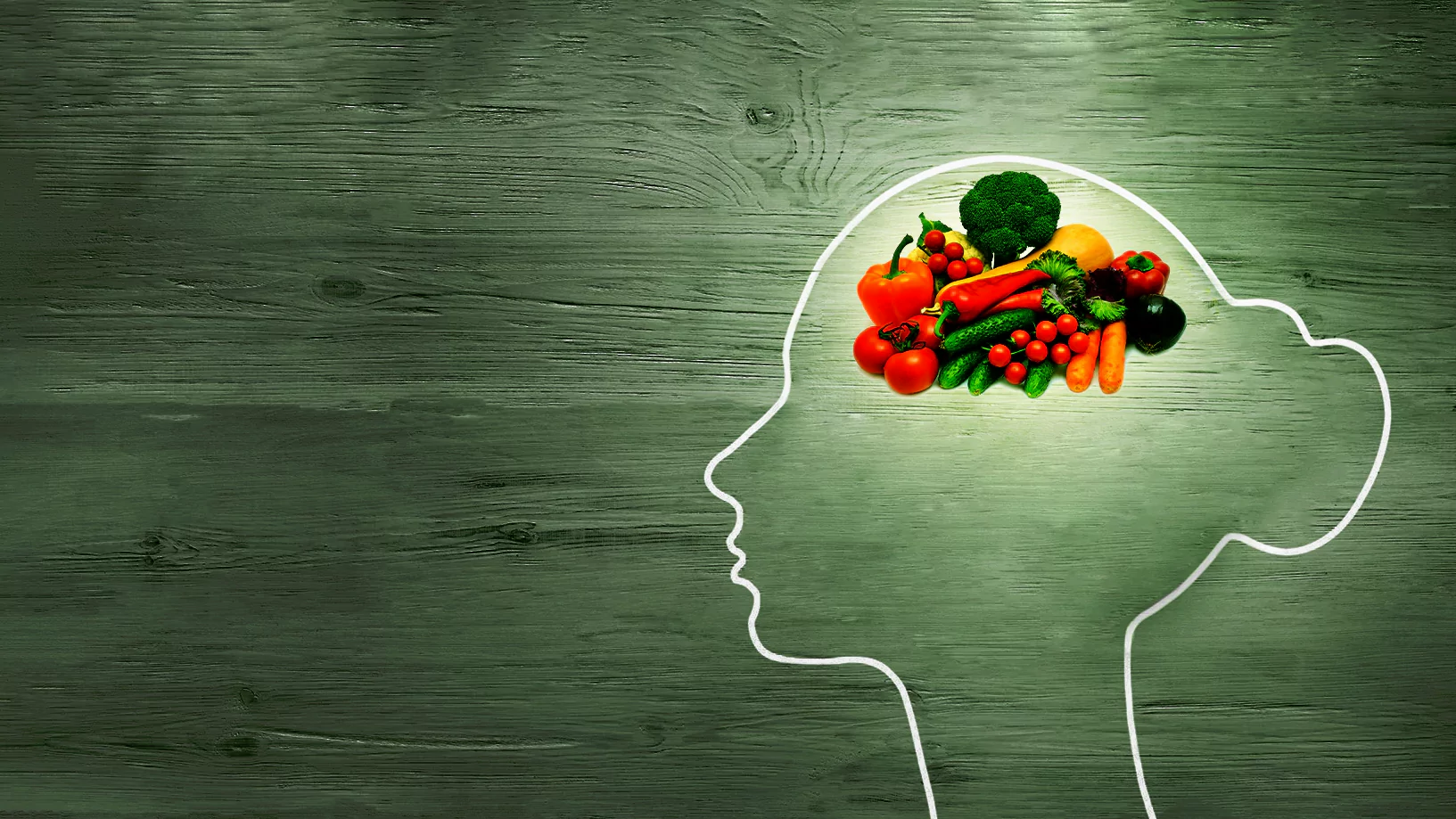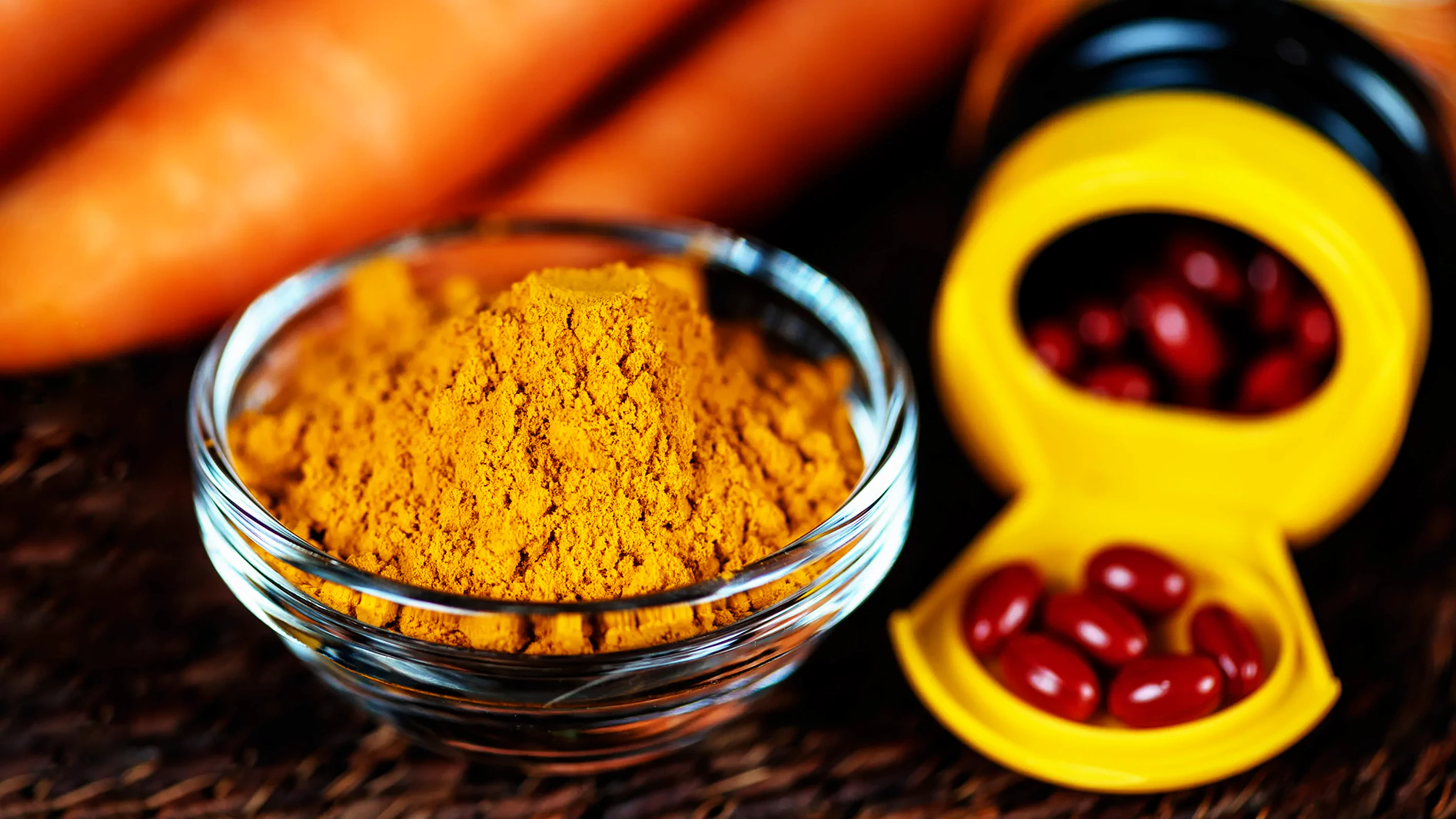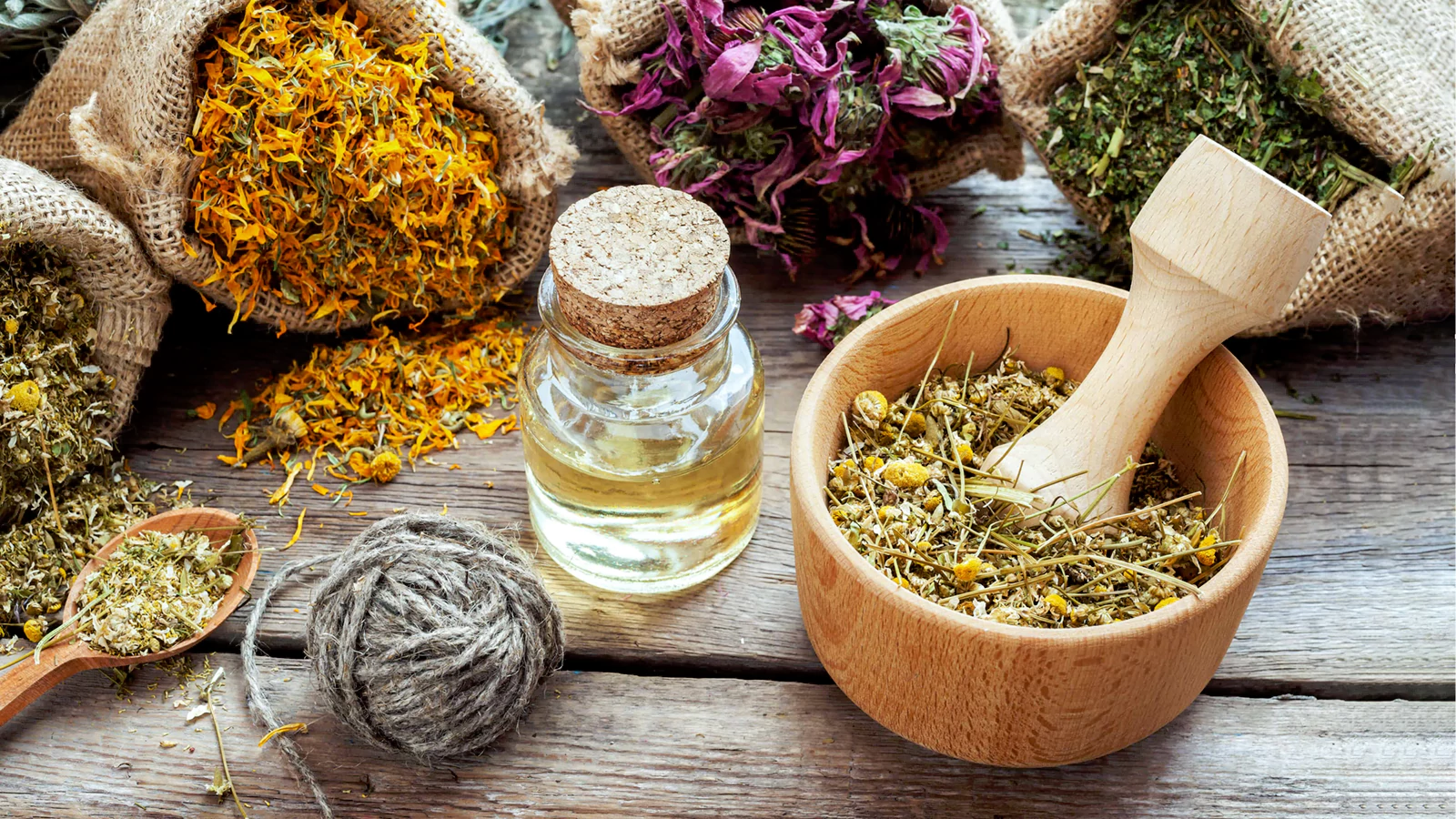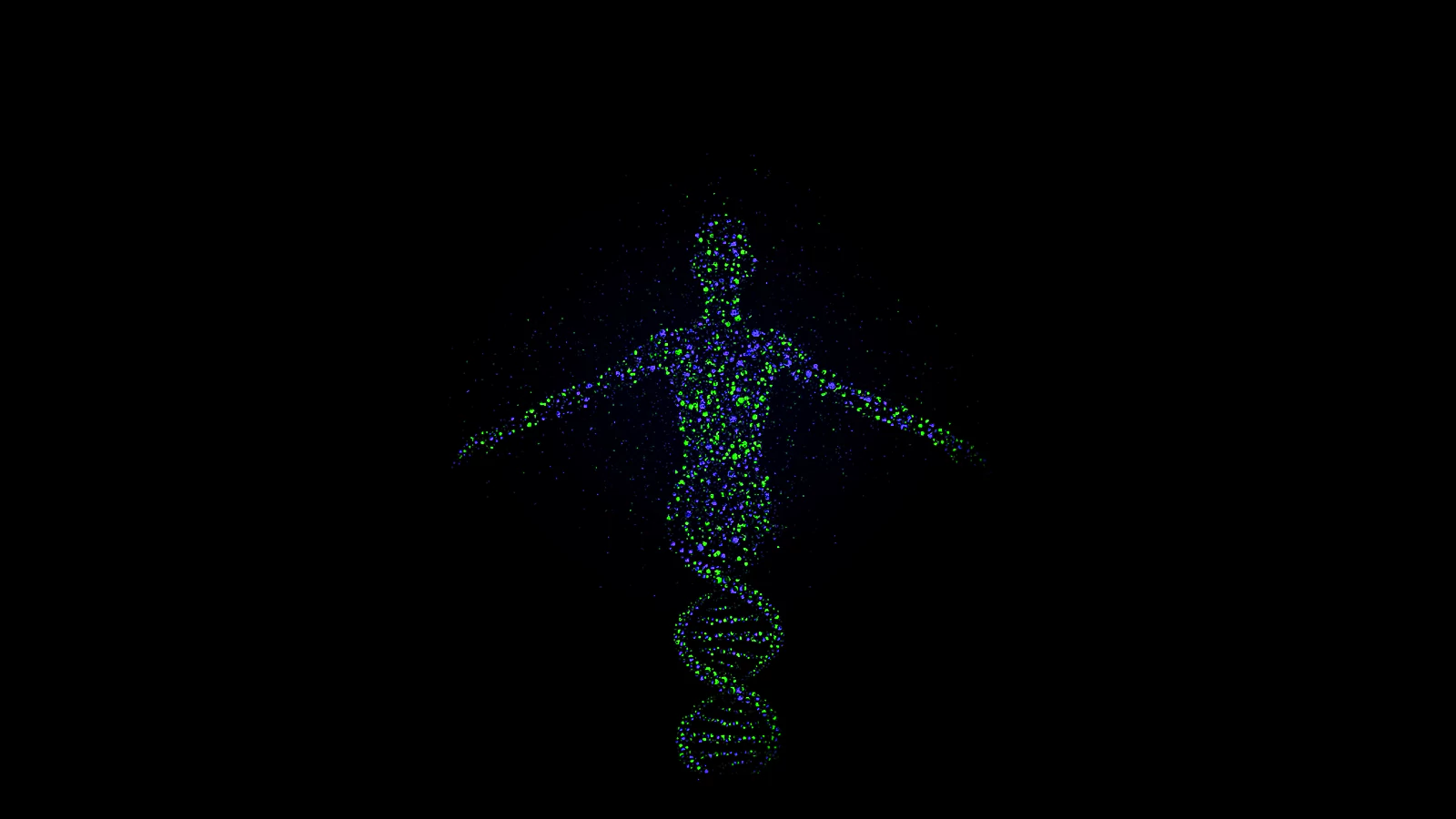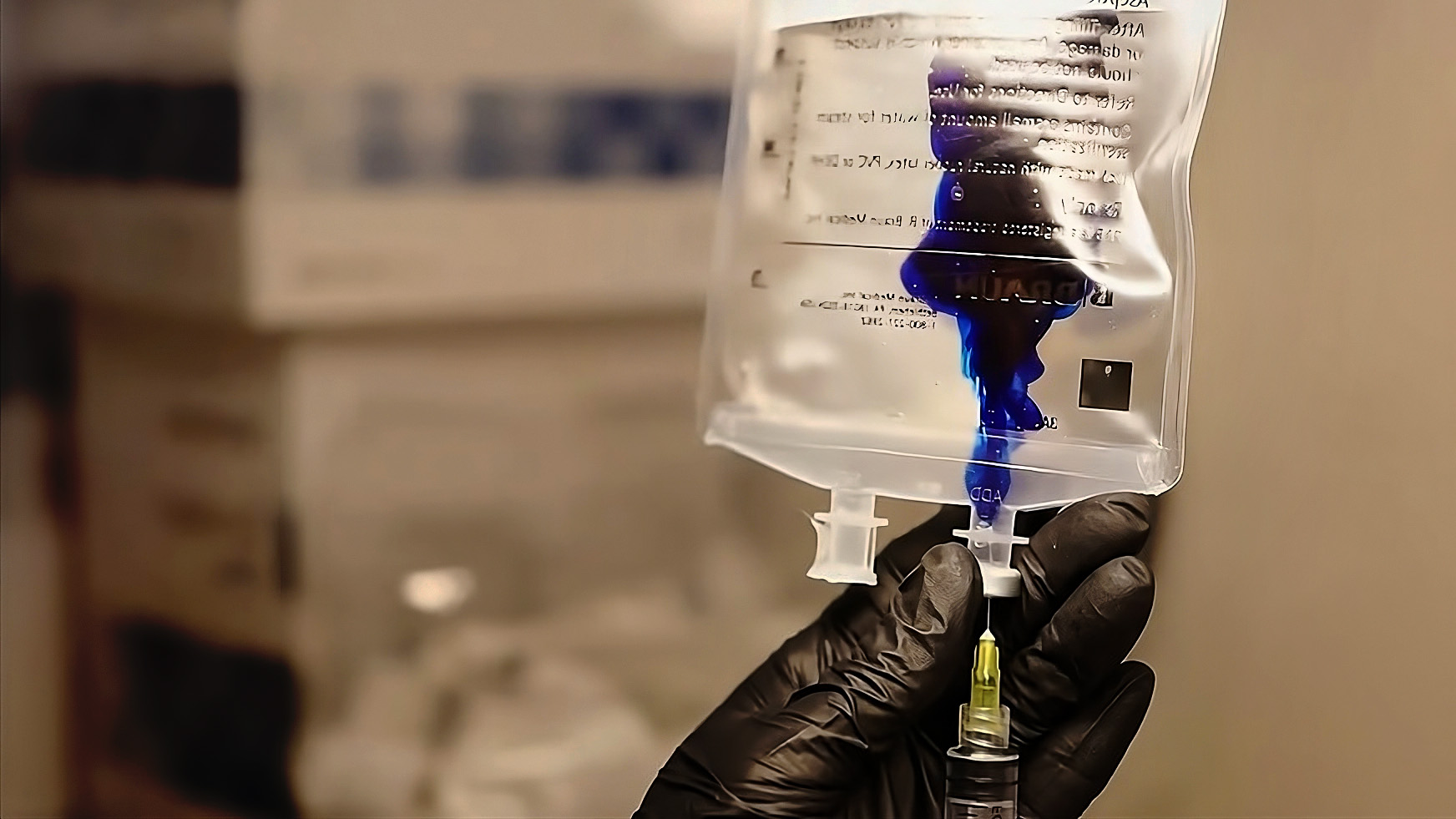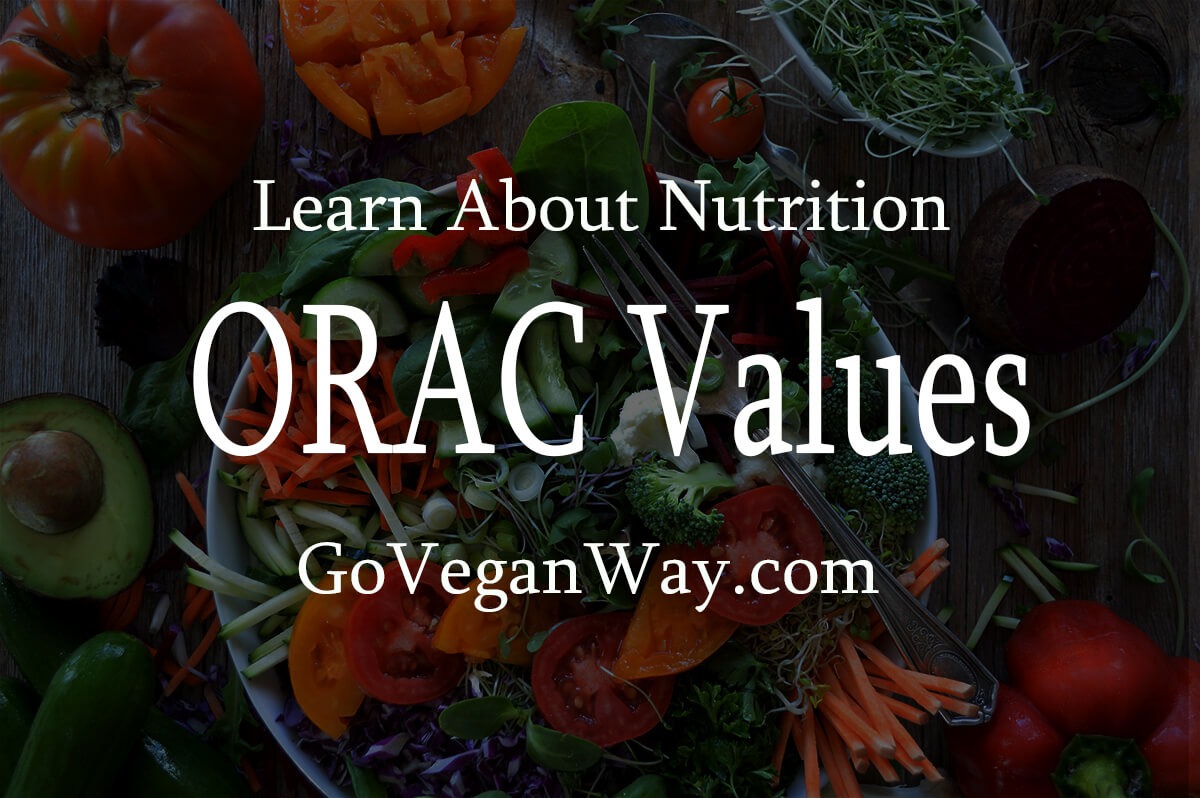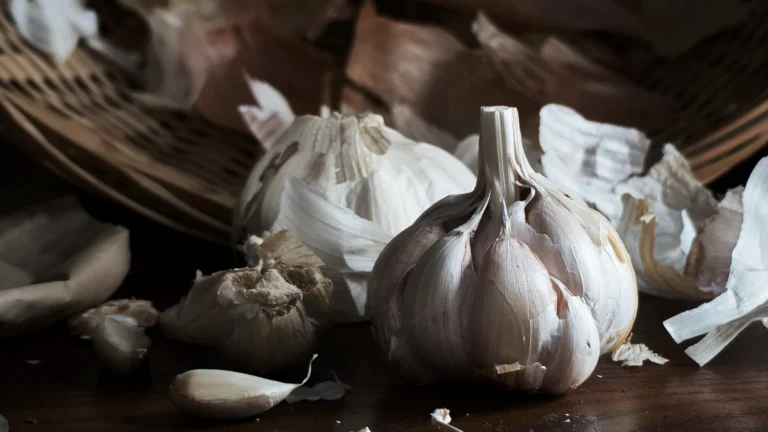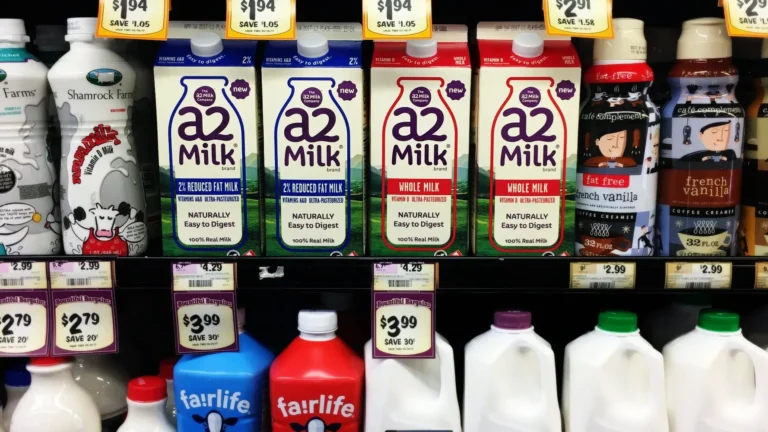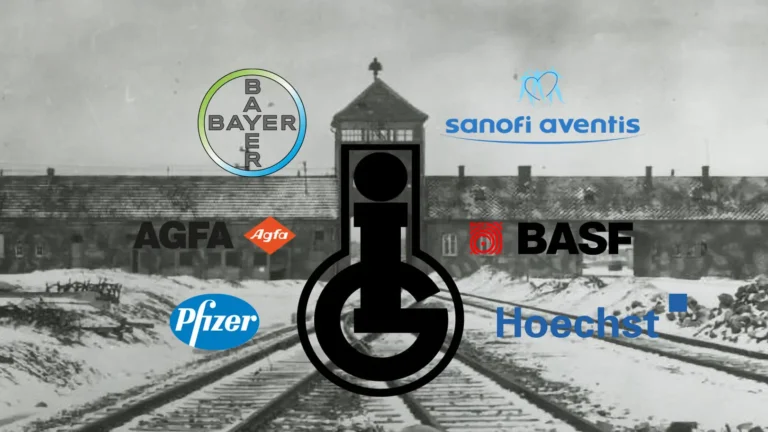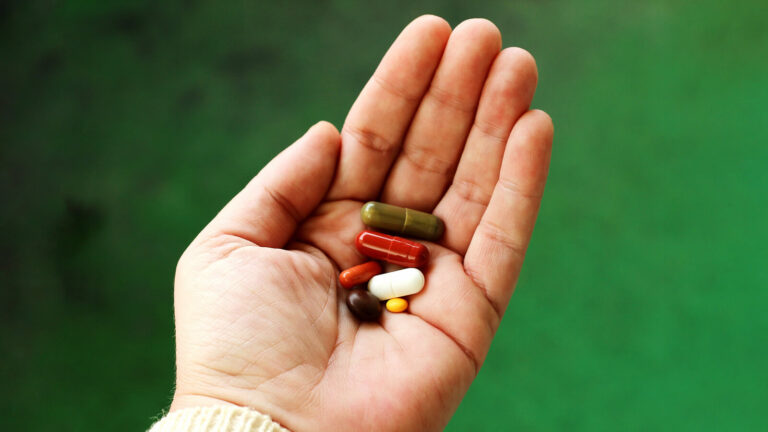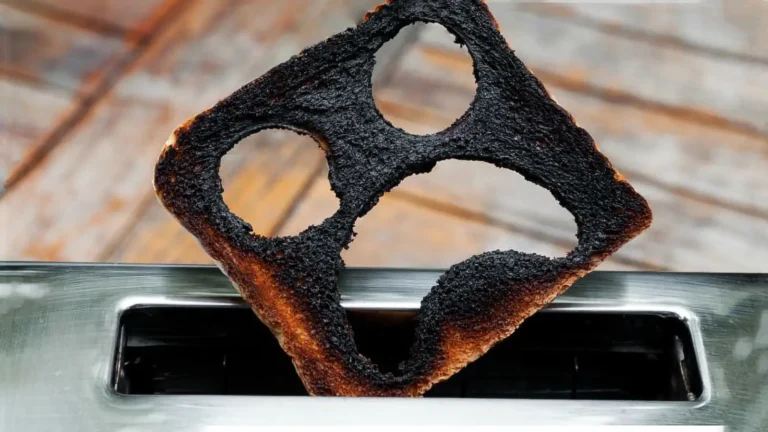Optimal Antioxidant Consumption: Recommended Intake of ORAC Units
Optimal antioxidant consumption is dependent on toxicity exposure. The minimum ORAC unit score is 8000 to 10000 daily just to counteract metabolism.
Milos Pokimica
Written By: Milos Pokimica
Medically Reviewed by: Dr. Xiùying Wáng, M.D.
Updated January 7, 2024Key Takeaways:
– Eating a diet rich in antioxidants (fruits, vegetables, spices, herbs, nuts) can reduce the risk of chronic diseases (Sharifi-Rad et al., 2020).
– Even a short-term antioxidant-rich diet significantly improves endothelial function in volunteers at low cardiovascular risk. In the long term antioxidant-rich diet may further reduce the risk of cardiovascular disease (Franzini et al., 2012).
– Modern diets heavy in refined sugar, oil, and animal products lack natural sources of antioxidants (Yang et al., 2011).
– To counterbalance the negative effects of metabolism, regular consumption of phenolic-rich foods such as fruits during meals is recommended to maintain oxidative balance and health (Burton-Freeman et al., 2010).
– Taking in a total of no less than 25000 ORAC units divided into five to seven times during a day is an optimal strategy for antioxidant intake.
– Taking 25000 ORAC units at one time is less beneficial than taking 5000 ORAC units five times a day because excess antioxidants may be excreted after several hours. It’s recommended to take 5000 units five times a day or even better, taking in 25000 units five times a day for optimal strategy.
– The consumption of high-antioxidant fruits and berries like blueberries, grapes, and kiwifruit with every meal or as a dessert is recommended to prevent postprandial oxidative stress and lipemia (Prior et al., 2007).
– Our bodies need 8000 to 10000 ORAC units per day just to counteract metabolic oxidation, and more if we consume animal products, have bad habits, have infections, or are exposed to environmental toxins (Prior et al., 2007).
– The optimal antioxidant RDA intake is between 30000 to 40000 ORAC units depending on individual lifestyle. The current FDA recommendation of 3000 units is not enough and is a manipulation of medical science for the maintenance of the status quo.
– The FDA recommends only 3000 ORAC units because it is a number that most people can reach with a couple of servings of fruits and vegetables. However, this amount is not enough for optimal health and well-being according to several studies in nutritional science.
– Low antioxidant intake can increase the risk of several chronic diseases caused by oxidative stress such as diabetes, cardiovascular disease, cancer, and Alzheimer’s disease.
– The standard American diet is lacking in antioxidants, with the average American consuming as low as 2000 ORAC units in a day (Yang et al., 2011).
– Only 5% of the U.S. population consumes 5 fruits and vegetables a day.
– The government removed the ORAC database and downplayed the importance of antioxidants for human health, claiming that their benefits are unproven. However, studies suggest that high-antioxidant diets can improve endothelial function and decrease inflammation. It is recommended to choose high antioxidant-rich food choices to improve overall health.
– Officially, the ORAC database was removed by the government because it was misused by food and dietary supplement manufacturing companies to promote their products. Also, the ORAC database started to influence consumers and started to guide their shopping choices, but the data for antioxidant capacity was generated by in vitro (test-tube) methods so it cannot be extrapolated to in vivo (human) effects.
Metabolism.
Have you ever noticed how an apple turns brown when you cut it in half and leave it exposed to air? That’s because of oxidation, a chemical reaction that damages the cells and tissues of living organisms. Antioxidants are compounds that can prevent or slow down oxidation by neutralizing the free radicals that cause it. By eating foods rich in antioxidants, you can protect your cells from oxidative stress which is a normal part of metabolism, and slow down its harmful effects on your health and aging.
We use glucose and oxygen to create energy for existence meaning we have a basic caloric need just for regular metabolism. Burning energy for sustenance without any other added stress or toxin creates free radicals just by itself. Oxidizing glucose to make energy is not perfect and some free radicals will form no matter what.
Because of this every time we eat something during regular metabolism there will be an increase in the level of oxidation in our bloodstreams over the next few hours as our bodies metabolize the glucose for energy.
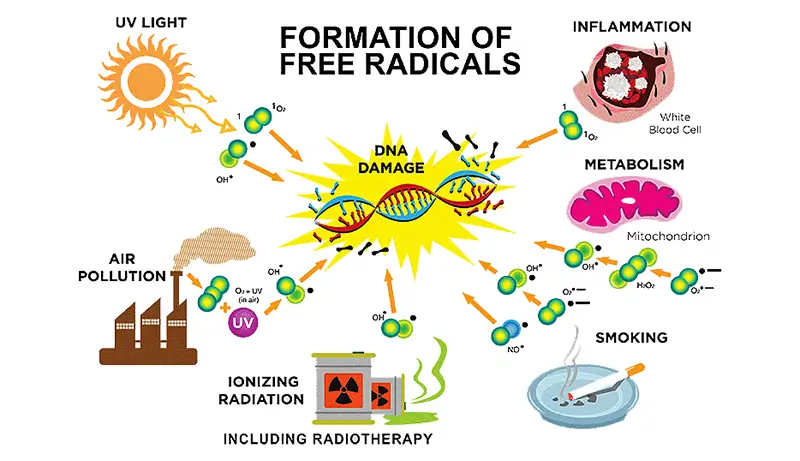
This is a completely normal reaction. Not just regular metabolism but many other processes will also create a depletion of our antioxidant reserve. For example, stressful events, infections, exercise, toxins, and many other stressors.
Summary:
While regular metabolism creates free radicals, antioxidant-rich foods help protect your cells from this oxidative stress, slowing its harmful effects on health and aging. Embrace a diverse, antioxidant-rich diet to combat this natural yet damaging process.
Maladaptation.
In evolutionary terms, we have never eaten meat and animal products in a meaningful amount. For the last 60 million years of evolution, we have been sustaining ourselves on whole-plant foods and now we have a problem. We have lost the ability to produce vitamin C in our liver. Most of the other species and all of the carnivores and omnivores produce their own vitamin C.
In nature sugar always comes with phytonutrients. We have evolved to expect a burst of dietary antioxidants any time we eat.
But what happens when we eat refined sugar, oil, and animal products? In the developed world most calories come from this type of food. Where are the expected antioxidants to prevent inflammation and DNA damage?
If we don’t eat phytonutrient-rich plant foods with each meal, then for hours after we eat, our bodies are tipped out of balance into a pro-oxidative state, which can set us up for oxidant stress diseases and will increase a rate of DNA damage meaning we will age more rapidly.
The postprandial (fed) state is a pro-oxidant state.
That’s why we need to ideally eat antioxidant-rich foods with every meal and during the entire day to sustain our antioxidant levels in a positive balance as much as we can. This is what for example British Journal of Nutrition has to say about it (Burton-Freeman et al., 2010).
“Postprandial (fed) state is a pro-oxidant state. The postprandial period is a time of active oxidative metabolism and the formation of ROS (free radicals). There is increasing evidence that the postprandial state is an important contributing factor to chronic disease. Two main questions are posed: first, what is the role of plant foods, specifically fruits rich in complex and simple phenolic compounds in postprandial metabolic management; and second, does the evidence support consuming these fruits with meals as a practical strategy to preserve health and lower risk for disease? The collected data suggest that consuming phenolic-rich fruits increases the antioxidant capacity of the blood, and when they are consumed with high fat and carbohydrate ‘pro-oxidant and pro-inflammatory’ meals, they may counterbalance their negative effects. Given the content and availability of fat and carbohydrate in the Western diet, regular consumption of phenolic-rich foods, particularly in conjunction with meals, appears to be a prudent strategy to maintain oxidative balance and health.“
(Burton-Freeman et al., 2010)
To some extent, Dr. Ronald was correct. Taking in 25000 ORAC units at one time would be no more beneficial than taking in 5000 ORAC units five times a day because in seven or eight hours the excess might be excreted. We cannot just eat 10 servings of blueberries for breakfast and eat bacon the rest of the day. Taking 5000 units five times a day is an optimal strategy. Or even better, taking in 25000 units five times a day.
Summary:
Combat post-meal oxidative stress, a key contributor to chronic disease, by prioritizing antioxidant-rich foods with every meal throughout the day, rather than relying on occasional mega-doses. Diversity and frequency trump high-dose binges.
Estimated antioxidant intake required to prevent postprandial (fed) pro-oxidant state.
There was a line of studies done on this subject in the last 10 to 15 years. This study (Prior et al., 2007) looked into different studies that analyzed how much different fruit influences the postprandial oxidative state. Dried plums or dried plum juice, for example, didn’t alter hydrophilic (water-soluble) or lipophilic (oil-soluble) antioxidant capacity which was surprising to me. Plums are one of the richest sources of antioxidants and have high ORAC value but it looks like their antioxidants in vivo might not be bioavailable. Blueberries increased both hydrophilic and lipophilic antioxidant capacity and cherries increased plasma lipophilic but not hydrophilic antioxidant capacity. The conclusion was:
“We have demonstrated that consumption of certain berries and fruits such as blueberries, mixed grape, and kiwifruit, was associated with increased plasma AOC (antioxidant capacity) in the postprandial state and consumption of an energy source of macronutrients containing no antioxidants was associated with a decline in plasma AOC. Consumption of high antioxidant foods with each meal is recommended in order to prevent periods of postprandial oxidative stress.“
(Prior et al., 2007)
Because they believed that avoiding high-fat meals is unavoidable for most of the population, meaning people will eat animal products and refined foods no matter what, the practical implication of this study in their mind was to promote the consumption of fruit with high polyphenolic content with every meal or as a dessert to prevent oxidative damage correlated with postprandial oxidative state and postprandial lipemia (high levels of fat in the bloodstream). If we don’t eat enough phytonutrient-rich plant foods during the day, like most of the people on the standard American diet, our bodies will be in a constant pro-oxidative state that will in a long run create many diseases. And when I say diseases, I mean real life-threatening illnesses like cancer for example. Most of the diseases of affluence are caused by a bad diet. Free radicals will oxidase fat and cholesterol in our bloodstream and that will greatly increase the risk of cardiovascular disease.
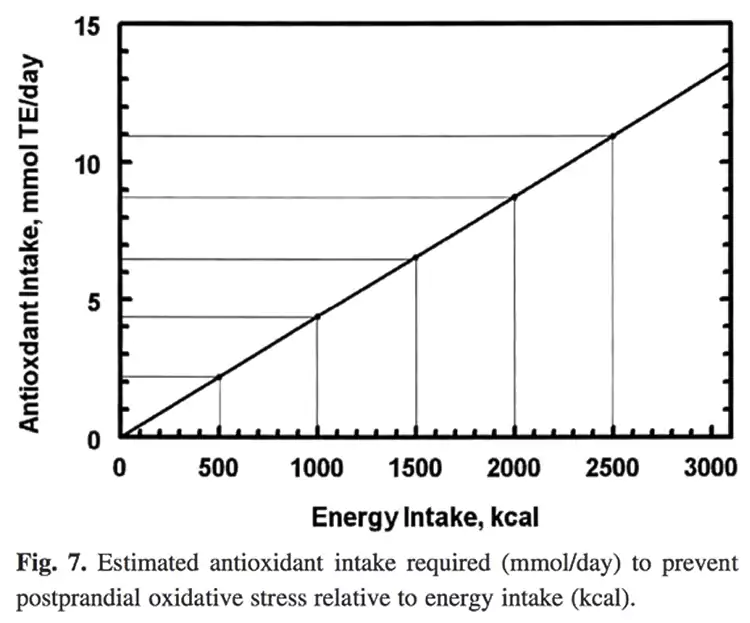
Summary:
Depending on the calories we need the number of antioxidants will vary also. For men, if you need 2500 calories for your basal metabolic rate you will need 11000 ORAC units a day. If your basal metabolism is at 1800 calories you will need 8000 ORAC units. If you burn more you will need more. This is just to counteract metabolic oxidation (Prior et al., 2007).
If you eat animal products, animal protein has pro-oxidative properties just by itself, you will need more.
Alcohol is severely pro-inflammatory and toxic to the body. If you drink or smoke you will need more.
If you have an infection or any disease you will need more.
On top of that, we are all exposed to environmental toxins so depending on your individual toxic load you will need more.
As you age you will need more.
There is a concept known as inflame-aging. As we age, we have a decline in immune function but also immune cells of elderly people produce much more pro-inflammatory cytokines. The answer is more anti-inflammatory food sources in our diet. Ideally, we should consume all our ORAC units from whole plant-based foods during the entire day.
Summary:
Your daily antioxidant needs aren’t one-size-fits-all! They depend on factors like your calorie intake, animal product consumption, toxins, infections, age, and even lifestyle habits like smoking and drinking.
Estimated optimal antioxidant RDA intake.
Our daily maximum is not 3000 units or 5000 units. Our daily minimum is 8000 to 10000 just to counteract metabolism. On top of that, we should add 5000 to 10000 units more because of the toxic overload, and if you are a smoker or drink alcohol or have other bad habits you should add at least 5000 to 10000 more. If you have influenza or infection or any other disease you should add much more and if you are stressed or sleep deprived you should add more also. If you want to fight against DNA damage for longevity purposes and DNA protection again you should add 5000 to 10000 more.
My recommendation for optimal antioxidant RDA is between 30000 to 40000 ORAC units depending on individual lifestyle.
Not 3000 to 5000 currently accepted value of recommendation by the FDA. In reality, even 3000 units is a number that most people on a standard American diet will have a hard time reaching and that is not enough, not even close. The reason the government recommends 3000 units is because in their research that will be the number that most people will accept because people can reach that with a couple of servings of fruits and vegetables and we don’t want people to change their real dietary habits. That is not good for the business. The government slogan of “5 a Day” is for the consistent consumption of five fruits and vegetables a day supplying an average ORAC value of 2500 ORAC units. This is just a manipulation of medical science for the maintenance of the status quo. If the FDA recommended real values it would completely destroy the current food pyramid and everything the government is preaching for the last century.
Summary:
Forget the “5 a Day” slogan! The true minimum antioxidant intake to counteract everyday stress and toxins is much higher than official recommendations, requiring a diet rich in fruits, veggies, and potentially supplementation, depending on lifestyle factors. Aim for 30,000-40,000 ORAC units daily for optimal health and longevity.
Estimated antioxidant intake in the standard American diet (SAD).
But even this minuscule value that you can reach with a pinch of cinnamon is, in reality, a number that most people won’t even reach. The sad reality is that only 5% of the U.S. population consumes 5 fruits and vegetables a day. The National Cancer Institute found that 42% of the population eats less than 2 servings a day. The average American will eat as low as 2000 ORAC units in a day (Yang et al., 2011). Also, when you eat fruits, you need to remember that some of the phytochemicals are not resistant to heat and that in time their antioxidant value is decreasing because of exposure to the air. For example, it is much better to buy whole flaxseeds and then grind them yourself and eat them immediately than to purchase ground flaxseeds in a store. Any antioxidant nutrients that make it through harvesting then become diminished to some extent due to the cooking, processing, preserving, packaging, or just exposure to the air.
When we have a diet that is so deprived of phytochemicals and a government that wants to keep this knowledge from the general public, we have a situation where coffee had become the number one source of antioxidants. I don’t want to undermine the benefits of coffee but it is not the reason that most people are drinking it. They just want caffeine high. Some of the most antioxidant-rich beverages are the ones that people consume regularly like coffee, tea, and red wine. The problem is that the intake of these drinks makes a significant contribution to the total amount of antioxidants consumed because the number of antioxidants consumed is minuscule. These drinks are far from potent sources of antioxidants.
If you want a drink then cocoa will be a better choice. Cocoa is the most balanced product in terms of antioxidants since it contains both water-soluble and lipid-soluble antioxidants and it is very potent. How much is in coffee? The antioxidant value of brewed Arabica coffee, medium roasted is 2,780. This value is for liquid 100 ml (3,38 ounces). This is a good source because you can easily drink 200ml of coffee in a day if you are a coffee drinker. One cup of coffee can have more antioxidants than an entire breakfast. Red wine will give a value of 3,607, green tea of 1,253, and cocoa powder 55,653 for 100 grams. “Raw“ cocoa powder can be as high as 80,000 units. If you want to drink a coffee, espresso is a better choice. Espresso will have 12,640 units on an ORAC scale but again this is for 100ml and you will drink one-third of that in a single espresso. When you start to read and understand some of the science behind antioxidants and you start to learn about ORAC values this could, and in most situations will impact your day-to-day grocery decisions. Most people don’t want to die from cancer or have debilitating chronic diseases. You might, for example, substitute one food item for a more nutritious one or god forbid you might decide to eat some nice fruit salad instead of the ice cream and Coca-Cola. This is what made the industry so angry.
Summary:
Most Americans consume significantly less antioxidants than recommended, even though common beverages like coffee and tea offer some. Consider switching to cocoa or espresso for a more potent antioxidant boost, and prioritize fruits and vegetables in your diet.
Official antioxidant intake recommendation.
As a consequence of this US government decided to quietly remove the ORAC database and downplay all of the science behind it. Soon after it was published the USDA removed the database and the accepted line of “5 a Day” was adopted instead. Officially the ORAC database previously available on the USDA website has been withdrawn for the following two main reasons:
1. “ORAC values are routinely misused by food and dietary supplement manufacturing companies to promote their products and by consumers to guide their food and dietary supplement choices.”
2. “The data for antioxidant capacity of foods generated by in vitro (test-tube) methods cannot be extrapolated to in vivo (human) effects and the clinical trials to test benefits of dietary antioxidants have produced mixed results. We know now that antioxidant molecules in food have a wide range of functions, many of which are unrelated to the ability to absorb free radicals.”
There is a partial truth in some of the claims that USDA made but the decision was less motivated by science than the desire to protect the interest of industry, both food, and drug. There is a truth that some food manufacturers started to label their products with health claims and that there is no science for every food item listed in the database but science is not the reason the database is withdrawn. It is correct that these in vitro measurements cannot be directly transported to in vivo subjects. There is an issue of bioavailability and potency. Phytochemicals from some food items can have a much higher ORAC rate in the test tube but poor absorbance so their real value is diminished and some other phytochemicals can be very potent but then cause other serious issues in the body. But again, at the end of the line, the database was still a very useful tool as a base for further research.
USDA has gone so far as to claim that antioxidants themselves are unproven to be beneficial for a human organism and by now you can understand that this is just another half-truth.
One of the lies they keep repeating over and over again is:
“ORAC values have been exaggerated and incorrectly linked to unsupported health claims.”
All of the science and citations I have in this chapter are well known and there are tens of thousands of studies by now the science is here but only for the use in research for the new and improved patented medicine. Publicly available databases and awareness are not in the main interest of the US government. Unfortunately, most of us will have to educate ourselves and the advice we will get will be designed to confuse us.
My advice that I practice also in my life is to have at least 30,000 units a day from whole food sources. But I do not smoke and I exercise almost every day and eat mostly whole plant foods so I don’t have a problem with consuming this amount. Also, I take some of the herbal mixtures that I make myself that will give me about 20,000 units in a tablespoon plus I do take some the supplements like astaxanthin. I will consume 20 to 30 times the amount of accepted FDA recommended value. Most people, on the other hand, don’t have an awareness of this issue. They know that they should eat fruit and vegetables because they are healthy but that is as far as awareness goes. And this is done deliberately. When I recommend something that is not in line with accepted FDA recommendations I do it on the basis of accepted science and people usually have a hard time believing that FDA will do the opposite.
Summary:
The US government removed the ORAC database, a tool for measuring food’s antioxidant capacity, due to concerns about misuse and the limitations of in-vitro testing, but i will argue the decision was driven by protecting industry interests rather than science. Though the database isn’t perfect, it provided valuable information for further research and public awareness, which some say is being intentionally suppressed.
Studies on dietary choices in vivo.
There was, for example, one study that did research into this exact topic (Franzini et al., 2012). Researchers wanted to see the impact of a diet rich in antioxidants on endothelial function. They did a scientific study on dietary choices. Exactly what I discussed in this chapter it is a well-done study and people at the USDA should have read it before removing the ORAC database. They had two groups of people. Both have consumed a diet that has the same amount of fruit and vegetables. The difference was that one group had high-quality produce rich in antioxidants like berries and the other group had a diet made out of poor-quality choices like lettuce and cucumbers and bananas. The amount of fiber, protein, minerals, vitamins, and all other nutrients were the same in both groups and were all above recommended RDA.
The only difference was in the ORAC values of the diets. The result was as expected. The C-reactive protein (a marker for inflammation within the body) increased by 40 percent in the low-antioxidant group compared to the control and decreased by 14 percent in the high-antioxidant group. This can then be translated to all other diseases where chronic inflammation plays a role like cardiovascular disease. The conclusion was:
“A short-term HT (antioxidant rich) diet improves endothelial function in volunteers at low cardiovascular risk, which may further reduce their risk of CVD (cardiovascular disease).“
(Franzini et al., 2012)
My recommendation will be to choose high antioxidant-rich food choices if you can. If you want to eat salad eat kale instead of lettuce. If you want to eat fruit eat berries instead of bananas. If you want a beverage drink hibiscus tea instead of Coke. If you have some pro-inflammatory condition this will improve your health significantly. There are many diseases out there that are caused by inflammation but many people don’t know that they are caused by a bad pro-inflammatory diet.
Summary:
Prioritizing high-antioxidant foods like berries and kale over low-antioxidant options like lettuce and bananas can significantly reduce inflammation and improve overall health, especially for those with pro-inflammatory conditions.
Conclusion:
- Burning energy for sustenance without any other added stress or toxin creates free radicals just by itself.
- Every time we eat something during regular metabolism there will be an increase in the level of oxidation in our bloodstreams over the next few hours.
- In nature sugar always comes with phytonutrients. We have evolved to expect a burst of dietary antioxidants any time we eat.
- If we don’t eat phytonutrient-rich plant foods with each meal, then for hours after we eat, our bodies are tipped out of balance into a pro-oxidative state.
- Consumption of high-antioxidant foods with each meal is recommended to prevent periods of postprandial oxidative stress.
- Even if we don’t eat an abundance of high-quality phytochemical-rich food, we at least should eat enough antioxidants to counteract the oxidation from the digestion of calories.
- If you need 2500 calories for your basal metabolic rate you will need 11000 ORAC units a day. If your basal metabolism is at 1800 calories you will need 8000 ORAC units just to counteract the metabolic oxidation.
- If you eat animal products, animal protein has pro-oxidative properties just by itself, you will need more.
- Alcohol is severely pro-inflammatory and toxic to the body. If you drink or smoke you will need more.
- If you have an infection or any disease you will need more.
- On top of that, we are all exposed to environmental toxins so depending on your individual toxic load you will need more.
- As you age you will need more.
- If you want to fight against DNA damage for longevity purposes and DNA protection again you should add 5000 to 10000 more.
- USDA has gone so far as to claim that antioxidants themselves are unproven to be beneficial for a human organism
- Only 5% of the U.S. population consumes 5 fruits and vegetables a day. The National Cancer Institute found that 42% of the population eats less than 2 servings a day.
- My recommendation for optimal antioxidant RDA is between 30000 to 40000 ORAC units depending on individual lifestyle.
FAQ
References:
Passages selected from a book: Passages selected from a book: Pokimica, Milos. Go Vegan? Review of Science Part 3. Kindle ed., Amazon, 2020.
- Burton-Freeman B. (2010). Postprandial metabolic events and fruit-derived phenolics: a review of the science. The British journal of nutrition, 104 Suppl 3, S1–S14. https://doi.org/10.1017/S0007114510003909
- Prior, R. L., Gu, L., Wu, X., Jacob, R. A., Sotoudeh, G., Kader, A. A., & Cook, R. A. (2007). Plasma antioxidant capacity changes following a meal as a measure of the ability of a food to alter in vivo antioxidant status. Journal of the American College of Nutrition, 26(2), 170–181. https://doi.org/10.1080/07315724.2007.10719599
- Franzini, L., Ardigò, D., Valtueña, S., Pellegrini, N., Del Rio, D., Bianchi, M. A., Scazzina, F., Piatti, P. M., Brighenti, F., & Zavaroni, I. (2012). Food selection based on high total antioxidant capacity improves endothelial function in a low cardiovascular risk population. Nutrition, metabolism, and cardiovascular diseases : NMCD, 22(1), 50–57. https://doi.org/10.1016/j.numecd.2010.04.001
- Yang, S., & Lian, G. (2020). ROS and diseases: role in metabolism and energy supply. Molecular and cellular biochemistry, 467(1-2), 1–12. https://doi.org/10.1007/s11010-019-03667-9
- Sharifi-Rad, M., Anil Kumar, N. V., Zucca, P., Varoni, E. M., Dini, L., Panzarini, E., Rajkovic, J., Tsouh Fokou, P. V., Azzini, E., Peluso, I., Prakash Mishra, A., Nigam, M., El Rayess, Y., Beyrouthy, M. E., Polito, L., Iriti, M., Martins, N., Martorell, M., Docea, A. O., Setzer, W. N., … Sharifi-Rad, J. (2020). Lifestyle, Oxidative Stress, and Antioxidants: Back and Forth in the Pathophysiology of Chronic Diseases. Frontiers in physiology, 11, 694. https://doi.org/10.3389/fphys.2020.00694
- Yang, M., Chung, S. J., Chung, C. E., Kim, D. O., Song, W. O., Koo, S. I., & Chun, O. K. (2011). Estimation of total antioxidant capacity from diet and supplements in US adults. The British journal of nutrition, 106(2), 254–263. https://doi.org/10.1017/S0007114511000109
Related Posts
Do you have any questions about nutrition and health?
I would love to hear from you and answer them in my next post. I appreciate your input and opinion and I look forward to hearing from you soon. I also invite you to follow us on Facebook, Instagram, and Pinterest for more diet, nutrition, and health content. You can leave a comment there and connect with other health enthusiasts, share your tips and experiences, and get support and encouragement from our team and community.
I hope that this post was informative and enjoyable for you and that you are prepared to apply the insights you learned. If you found this post helpful, please share it with your friends and family who might also benefit from it. You never know who might need some guidance and support on their health journey.
– You Might Also Like –

Learn About Nutrition
Milos Pokimica is a doctor of natural medicine, clinical nutritionist, medical health and nutrition writer, and nutritional science advisor. Author of the book series Go Vegan? Review of Science, he also operates the natural health website GoVeganWay.com
Medical Disclaimer
GoVeganWay.com brings you reviews of the latest nutrition and health-related research. The information provided represents the personal opinion of the author and is not intended nor implied to be a substitute for professional medical advice, diagnosis, or treatment. The information provided is for informational purposes only and is not intended to serve as a substitute for the consultation, diagnosis, and/or medical treatment of a qualified physician or healthcare provider.NEVER DISREGARD PROFESSIONAL MEDICAL ADVICE OR DELAY SEEKING MEDICAL TREATMENT BECAUSE OF SOMETHING YOU HAVE READ ON OR ACCESSED THROUGH GoVeganWay.com
NEVER APPLY ANY LIFESTYLE CHANGES OR ANY CHANGES AT ALL AS A CONSEQUENCE OF SOMETHING YOU HAVE READ IN GoVeganWay.com BEFORE CONSULTING LICENCED MEDICAL PRACTITIONER.
In the event of a medical emergency, call a doctor or 911 immediately. GoVeganWay.com does not recommend or endorse any specific groups, organizations, tests, physicians, products, procedures, opinions, or other information that may be mentioned inside.
Editor Picks –
Milos Pokimica is a health and nutrition writer and nutritional science advisor. Author of the book series Go Vegan? Review of Science, he also operates the natural health website GoVeganWay.com
Latest Articles –
Top Health News — ScienceDaily
- This cancer-fighting molecule took 50 years to buildon December 22, 2025
MIT scientists have achieved the first-ever lab synthesis of verticillin A, a complex fungal compound discovered in 1970. Its delicate structure stalled chemists for decades, despite differing from related molecules by only two atoms. With the synthesis finally complete, researchers created new variants that showed strong activity against a rare pediatric brain cancer. The breakthrough could unlock an entire class of previously unreachable cancer-fighting molecules.
- A new drug could stop Alzheimer’s before memory loss beginson December 22, 2025
New research suggests Alzheimer’s may start far earlier than previously thought, driven by a hidden toxic protein in the brain. Scientists found that an experimental drug, NU-9, blocks this early damage in mice and reduces inflammation linked to disease progression. The treatment was given before symptoms appeared, targeting the disease at its earliest stage. Researchers say this approach could reshape how Alzheimer’s is prevented and treated.
- Why one long walk may be better than many short oneson December 22, 2025
How you walk may matter just as much as how much you walk. A large UK study tracking more than 33,000 low-activity adults found that people who grouped their daily steps into longer, uninterrupted walks had dramatically lower risks of early death and heart disease than those who moved in short, scattered bursts.
- Parkinson’s breakthrough changes what we know about dopamineon December 22, 2025
A new study shows dopamine isn’t the brain’s movement “gas pedal” after all. Instead of setting speed or strength, it quietly enables movement in the background, much like oil in an engine. When scientists manipulated dopamine during movement, nothing changed—but restoring baseline dopamine levels made a big difference. The finding could reshape how Parkinson’s disease is treated.
- A traditional Brazilian plant shows unexpected strength against arthritison December 22, 2025
A Brazilian study has confirmed that Joseph’s Coat, a plant used for generations in folk medicine, can significantly reduce inflammation and arthritis symptoms in lab tests. Researchers observed less swelling, healthier joints, and signs of tissue protection. Just as important, the extract showed a promising safety profile at tested doses. The discovery could pave the way for new plant-based anti-inflammatory treatments.
- Study links full-fat cheese to lower dementia riskon December 22, 2025
Eating full-fat cheese and cream may be associated with a lower risk of dementia, according to a large study that tracked people for more than 25 years. Those who consumed higher amounts of these foods developed dementia less often than those who ate little or none. Interestingly, low-fat dairy products did not show the same pattern. Researchers caution that the findings show an association, not cause and effect.
- Science says we’ve been nurturing “gifted” kids all wrongon December 21, 2025
A major international review has upended long-held ideas about how top performers are made. By analyzing nearly 35,000 elite achievers across science, music, chess, and sports, researchers found that early stars rarely become adult superstars. Most world-class performers developed slowly and explored multiple fields before specializing. The message is clear: talent grows through variety, not narrow focus.
PubMed, #vegan-diet –
- Comparing diet-related attitudes, perceptions, and behaviors of vegan and omnivorous adults: results from a cross-sectional survey study in Germanyon December 22, 2025
CONCLUSION: The findings are consistent with and build on existing research on cognitive and behavioral patterns related to a vegan diet, while at the same time yielding some additional insights. In particular, the results on significant differences in the risk-benefit perception of a vegan diet, as well as on motivations and influences regarding the decision to follow a vegan diet provide an important basis for the development of public health interventions and a foundation for further […]
- Assessment of vitamin A, vitamin B2, vitamin B12, vitamin K, folate, and choline status following 4 months of multinutrient supplementation in healthy vegans: a randomised,…on December 19, 2025
CONCLUSION: A multinutrient supplement containing 82 µg of vitamin B(12) per day significantly positively affected vitamin B(12) blood biomarkers in healthy vegans.
- Exploring the synergistic potential of pH and ultrasonication on the functional properties of pea and lentil protein isolates and its formulation in food producton December 15, 2025
The substitution of meat proteins with plant-based proteins from various sources is often motivated by nutritional considerations. However, the inherent limited solubility of plant proteins, which results in suboptimal techno-functional properties, remains a persistent challenge in food formulation. The purpose of this study was to utilize unique properties of pea (Pisum sativum L.) and lentil (Lens culinaris) through ultrasonication and pH variation in order to develop a stable and […]
- Healthful and Unhealthful Plant-Based Diets and Their Association with Cardiometabolic Targets in Women Diagnosed with Breast Cancer: A Cross-Sectional Analysis of a Lifestyle Trialon December 11, 2025
CONCLUSIONS: Maintaining cardiometabolic risk factors within normal ranges is clinically relevant in BCS, and this may be more likely when a plant-based diet is consumed, especially if low in unhealthy plant foods.
- Functional and Nutritional Properties of Lion’s Mane Mushrooms in Oat-Based Desserts for Dysphagia and Healthy Ageingon December 11, 2025
Hericium erinaceus (Lion’s Mane mushroom) is a medicinal species recognised for its neuroprotective and antioxidant properties. This study investigated its potential as a functional ingredient in oat milk-based desserts formulated for individuals with dysphagia. Freeze-dried Lion’s Mane powder (LMP), containing high-quality protein (~16%, amino acid score 88%), dietary fibre (~31%), and phenolic compounds (72.15 mg GAE/g), was incorporated at varying levels using gelatin or iota-carrageenan […]
Random Posts –
Featured Posts –
Latest from PubMed, #plant-based diet –
- Associations Between Healthy and Plant-Based Dietary Patterns and Cognitive Reserve: A Cross-Sectional Analysis of the 1946 British Birth Cohortby Kelly C Cara on December 23, 2025
CONCLUSIONS: CR was positively associated with healthy dietary patterns and inversely associated with unhealthful plant-based dietary patterns. Diet uniquely explained variations in CR and should be considered among influential lifestyle factors in future research. Longitudinal analyses are needed to confirm these findings.
- Dietary quercetagetin attenuates H2O2-induced oxidative damage and preserves meat quality in broilers by modulating redox status and Nrf2/ferroptosis signaling pathwayby Wenyue Hu on December 22, 2025
In modern poultry production, oxidative stress has emerged as a pivotal factor compromising the health status and overall performance of broiler. The aim of this study was to investigate the effects of dietary quercetagetin (QG) supplementation on hydrogen peroxide (H(2)O(2))-induced oxidative damage in breast muscle of broilers, focusing on growth performance, meat quality, and antioxidant function, and elucidating the underlying mechanisms. Two hundred and forty one-day-old Cobb broilers […]
- Effects of dietary selenium supplementation on physiological parameters, tissue fatty acid composition, and fatty acid-metabolism relative gene expression of grouper (Epinephelus coioides) fed high…by Yen-Chun Lee on December 22, 2025
The present study evaluated the effects of dietary selenium (Se) supplementation on growth performance, physiological responses, tissue fatty acid profiles, and the expression of genes related to fatty acid metabolism in juvenile grouper (Epinephelus coioides). A control diet based on soy protein concentrate, replacing 40% of the fish meal protein, was supplemented with graded levels of Se at 0, 0.3, 0.6, and 1.0 mg Se kg^(-1). A fish meal-based reference diet was also included for […]
- Unravelling the interaction between feeding regimens and milking time in Parmigiano Reggiano PDO milk: an integrated metabolomics and ion mobility lipidomics approachby Pier Paolo Becchi on December 22, 2025
In this study, an integrated approach based on UHPLC-HRMS metabolomics and IM-HRMS lipidomics has been carried out to unravel the interaction between feeding and milking time in the overall chemical profile of Parmigiano Reggiano (PR) milk. Specifically, ANOVA multiblock OPLS (AMOPLS) modelling revealed the complementarity of the assays in combining the effect of these two critical parameters. In particular, metabolomics highlighted the presence of plant-derived compounds (mainly terpenoids […]
- Comparing diet-related attitudes, perceptions, and behaviors of vegan and omnivorous adults: results from a cross-sectional survey study in Germanyby Dan Borzekowski on December 22, 2025
CONCLUSION: The findings are consistent with and build on existing research on cognitive and behavioral patterns related to a vegan diet, while at the same time yielding some additional insights. In particular, the results on significant differences in the risk-benefit perception of a vegan diet, as well as on motivations and influences regarding the decision to follow a vegan diet provide an important basis for the development of public health interventions and a foundation for further […]
- The effect of dietary interventions on peripheral markers of inflammation among people with multiple sclerosis: A systematic review and meta-analysis of randomized controlled trialsby Wade R Pingel on December 21, 2025
CONCLUSIONS: Several dietary interventions may reduce systemic inflammation in PwMS, with greater effects in longer-duration interventions. Calorie-restricted diets did not significantly alter adipokines. Given the limited number and heterogeneity of studies, larger and longer RCTs using comparable dietary interventions are needed to confirm these findings.




